I bought this Keithley 706 scanner on eBay a while ago. This scanner can take up to ten different scanner cards and is typically used in an automated testing environment. In this blog post, I will show some of the teardown pictures and a couple of the scanner cards (7064, 7152) included in this unit. A quick teardown video is included towards the end.
Scanners like the Keithley 706 and HP 3488A were widely used in semiconductor and electronics industries for automated testings. These scanners have long become obsolete and given way to their modern counterparts and thus can be picked up on eBay rather cheaply. If you are lucky, you can find ones with many scanner cards included for well under $100.
Depending on the tasks at hand, there are many different scanner cards to choose from, but in general they can be divided into two categories: many-to-one switches or matrix switches. The Keithley 7064 low voltage scanner card for example, is suitable for switching between up to 20 different input channels so that a single instrument can be used to monitor many DUTs from different sources. Keithley 7152 scanner card on the other hand, is a low current 4×5 matrix scanner card and can be used as a crossover switch to connect signals on any one of its 4 rows to any one of the five columns. Many other specialty scanner cards also exist for high current, high voltage or high frequency applications, etc.
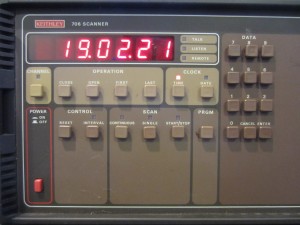
|
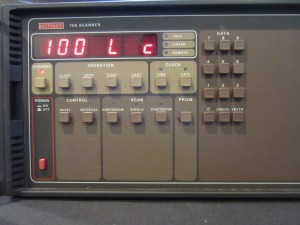
|
These two pictures below are the internal views with the top cover (image to the left) and the bottom cover (image to the right) removed. Most of the space in the chassis is taken by the ten available slots for the plugin scanner cards. Keithley 705 is another similar scanner, but with only two available slots.
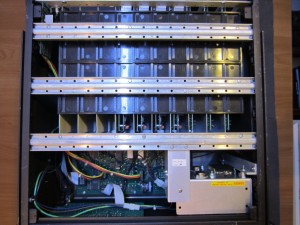
|
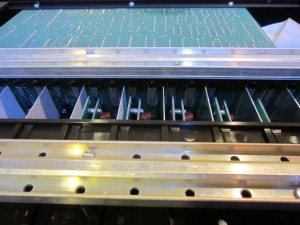
|
The picture on the left below shows the main circuit board that lies on the bottom of the case behind the expansion slots. The main processor used is a Motorola MC6802P 8-bit 6800 series microprocessor. Its firmware is stored in the two 64 kb M2764A NMOS UV erasable EPROM chips. GPIB communication is handled via TMS9914 GPIB adapter IC and SN75160/75161 bus transceivers. This scanner has a battery backed up real-time clock μPD1990 chip and it can be used as a general clock (see first picture in this post).
Each scanner card is driven by the outputs from two ULN2003A Darlington transistor arrays as can be seen in the picture to the right below. Since this interface to the scanner cards is pretty simple, one can easily make his own scanner cards for a specific application.
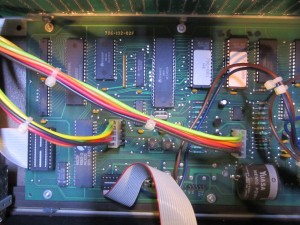
|
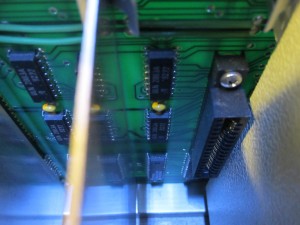
|
Here are the two kinds of scanner cards inside my Keithley 706. The one on the left below is a Keithley 7064 20 channel low voltage scanner card and the one on the right is a Keithley 7152 low current matrix scanner card. To ensure high reliability and fast switching actions, all relays used are top quality relays from COTO technology which specializes in low level signal switching.
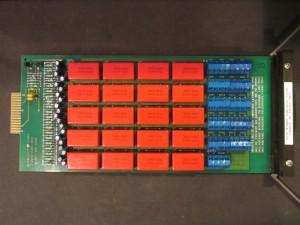
|
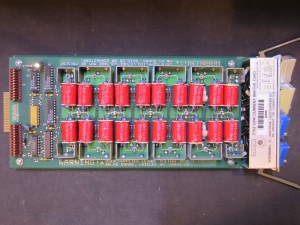
|
7152 is designed for low current operations and thus each relay connection is carefully mounted on a Teflon standoff to reduce leakage current. The pictures below are closeups of the AMP 202757-3 connector.
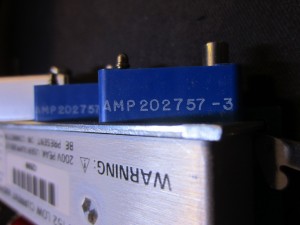
|
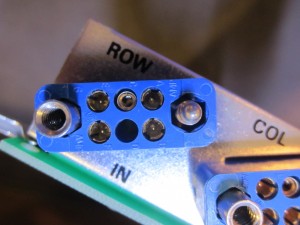
|
Here is a short teardown video showing the inside of my Keithley 706 scanner:

